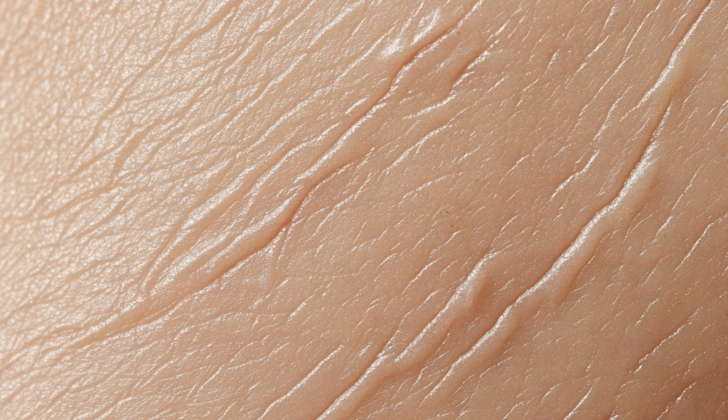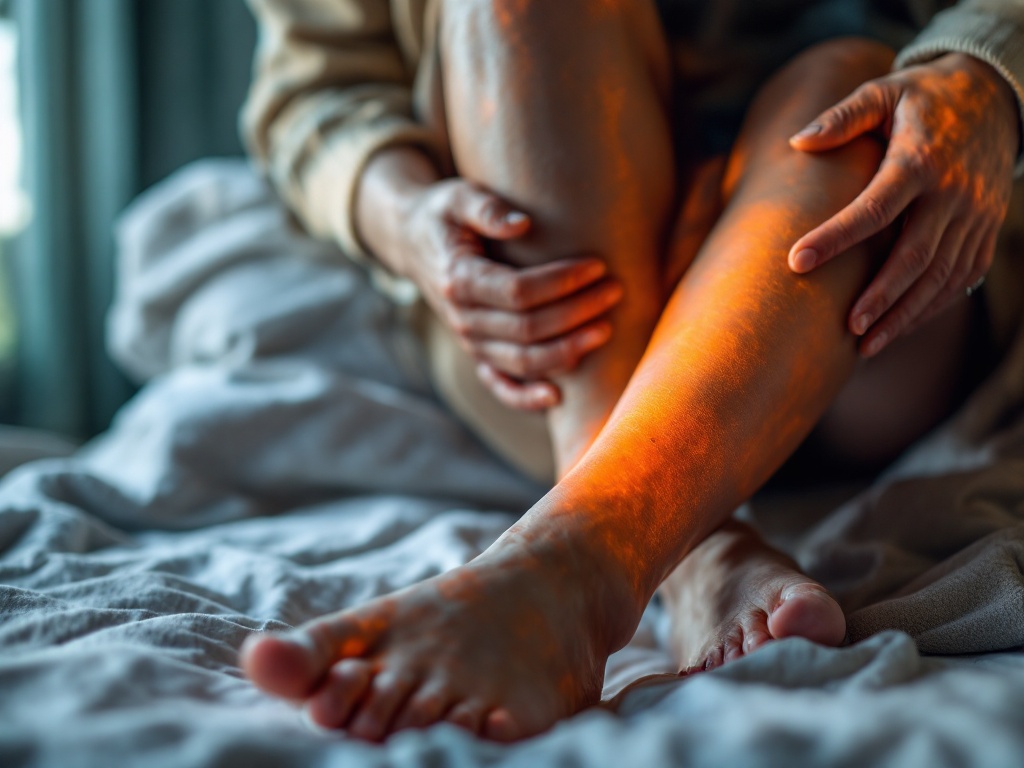What is Stretch Marks?
Stretch marks, also known as striae, are a widespread concern that can cause distress. They can appear on various parts of the body including the stomach, thighs, buttocks, chest, back, armpits, and groin. There are several types of stretch marks, classified based on how they look or their cause:
- Striae atrophicans: Where the skin has thinned out
- Striae gravidarum: These are specific to post-pregnancy
- Striae distensae: Caused by the skin being stretched
- Striae rubrae (red), striae albae (white), striae nigra (black), striae caerulea (dark blue), are named based on their colors
Treating stretch marks can be quite tricky and challenging.

What Causes Stretch Marks?
Striae, more commonly known as stretch marks, are a type of scar that forms when the second layer of your skin, or the dermis, is stretched. This stretching can be from rapid weight gain and loss or can be related to certain kinds of medications known as corticosteroids.
There are a few reasons why these stretch marks might form. Some are related to hormones which can either promote too much activity of the skin-building cells, called fibroblasts, or increase the breakdown of proteins. Pregnancy-related hormones can also play a role. One hormone, known as relaxin, relaxes the ligaments in the pelvis and is typically found in lower amounts in women who get stretch marks.
– Deficiency of a protein called fibrillin, which helps provide strength and elasticity to your skin has also been suggested as a cause. There are also genetic factors, but these have not been thoroughly studied. What has been discovered, however, is that there may be some link between having lower levels of proteins, like collagen and fibronectin, and the formation of stretch marks. These proteins are essential for creating and maintaining healthy, elastic skin.
Risk Factors and Frequency for Stretch Marks
Striae distensae, often called stretch marks, are lines that can appear on the skin due to several reasons. They often show up during pregnancy, puberty, and obesity. They can also appear after certain medical conditions or treatments, such as Cushing syndrome, surgeries, or due to the use of corticosteroids. Other causes include certain medical conditions like Marfan syndrome, anorexia nervosa, febrile illnesses, chronic liver disease, or prolonged use of certain medications like chemotherapy, antibiotics, contraceptives, and neuroleptics.
Stretch marks tend to be more common in women than men and may be more visible in people with darker skin. Having a family history of stretch marks can increase the chances of getting them. Pregnant women who are younger, have larger abdomen sizes or significant weight gain due to factors like large baby size or excess amniotic fluid are also more likely to get stretch marks. Lastly, smokers have been found to have a higher likelihood of having stretch marks as well.
- Stretch marks are common during pregnancy, puberty, and obesity.
- They can also appear after certain medical situations like Cushing syndrome, surgeries, or due to the use of corticosteroids.
- Other associated causes include diseases like Marfan syndrome, anorexia nervosa, febrile illnesses, chronic liver disease, or prolonged use of certain medications.
- Stretch marks are more common in women, and more visible in people with dark skin.
- Having a family history of stretch marks increases the likelihood of getting them.
- Young pregnant women, those with larger abdomen size, or significant weight gain are more prone to stretch marks.
- Smoking has been associated with a higher incidence of stretch marks.
Signs and Symptoms of Stretch Marks
Striae, which are stretch marks, can appear due to various reasons such as skin stretching from growing quickly during puberty, increased muscle mass from working out, or weight gain. They can also occur during pregnancy or from the use of potent corticosteroid creams or long-term usage of systemic steroids. However, if none of these explanations fit and the stretch marks are widespread, it’s important to take a complete medical history and perform a thorough physical examination.
Initially, these stretch marks show up as slightly raised, pink or purplish lines (known as striae rubrae). Over time, these lines fade to pale, flattened, wrinkled scars (known as striae albae). These marks usually run perpendicular to the direction in which the skin stretches. Over time, these marks become less noticeable. During a pregnancy, these marks can be seen on the stomach, breasts, and thighs. In teenagers, they often appear on the thighs, buttocks, and breasts in girls, and on the backs in boys.
Sometimes, the initial pink or purplish stretch marks (striae rubrae) may cause itching. However, stretch marks are generally not associated with any other symptoms. Treatment is usually sought due to their cosmetic appearance rather than any discomfort.
Testing for Stretch Marks
When talking about the treatment effectiveness for stretch marks, authors use different ways to judge the type and severity. However, these methods are not universally standardized or validated. A technique called dermoscopy shows that red stretch marks have more pigmentation, while white stretch marks have less. A tissue sample or biopsy is not usually helpful or required.
Treatment Options for Stretch Marks
The goal of treating stretch marks is to reduce redness, swelling, and irritation, improve hydration, increase collagen and elastic fiber production, and decrease inflammation.
There are various treatments suggested for preventing and treating stretch marks, but it’s important to understand that there’s limited evidence to support their effectiveness. A lot of creams and over-the-counter beauty products are marketed towards expecting mothers to prevent or reduce the severity of stretch marks, but it’s uncertain how beneficial these really are.
Silicone gels, which are usually recommended for depressed scars, can also be used on stretch marks. But figuring out how effective these are can be challenging.
Tretinoin cream is another treatment option sometimes used on early stage (red) stretch marks. But it can cause side effects like redness and peeling and is not safe for use during pregnancy. Acid-based chemical peels have likewise been tried on stretch marks, but it’s unclear how well they work.
Massages and exposure to a wide spectrum of ultraviolet light to encourage repigmentation in later stage (white) stretch marks are other methods sometimes used. However, the outcomes of these treatments are also uncertain.
Various light and laser therapies and treatments using high-frequency electric currents (radiofrequency energy devices) are used to stimulate the skin to improve the appearance of stretch marks. But, again, there’s uncertainty about which types of treatments work best and when they should be used. Such treatments can cause temporary redness and swelling and should be avoided by people with darker skin due to higher risks of side effects.
Other treatments for stretch marks include microdermabrasion, needling, and ultrasound devices, amongst others. But evaluating the effectiveness of these treatments is challenging due to varying treatment protocols.
Injections of platelet-rich plasma, a substance in your blood that aids healing, are also being studied as a possible treatment for stretch marks.
For all these treatments, before-and-after photos taken at regular intervals can help track progress. However, it’s worth noting that many reports often lack standardized photos and don’t provide long-term follow-up data.
What else can Stretch Marks be?
These are several skin conditions that a dermatologist might diagnose:
- Anetoderma
- Cutis Laxa
- Linear Focal Elastosis
- Mid-Dermal Elastosis
- Pseudoxanthoma Elasticum
- Striae from Topical Steroidal Abuse












